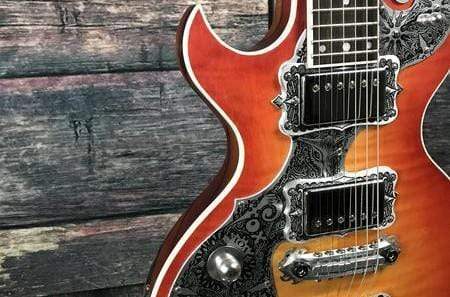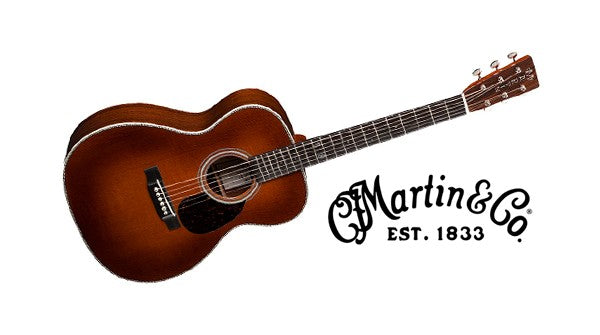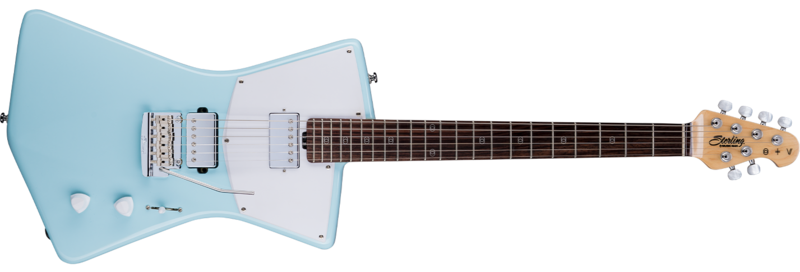Your Cart is Empty
Take Your Playing to the Next Level With Paradigm-Shifting Teye Guitars
November 14, 2018 6 min read

When Teije ‘Teye’ Wijnterp, founder of Teye Guitars, first started building guitars, he asked himself what he could do to make his guitars stand out from the hundreds of that were flooding the market at the time. Taking a page from his mentor, British guitar maker Tony Zemaitis, Teye took classic guitar shapes and began experimenting with materials and electronics, seeking to solve the problems he encountered as a working guitarist.
Working for many years as a professional guitarist (Flamenco guitar galore), Teye gained a different, ‘real life’ perspective on what guitarists needed from their instruments. Over the years, Teye kept a running “bitch list” of things that frustrated him about the guitars on the market at the time. The now-famous list can be seen below or on Teye's site here.

Teye Bitch List, from http://www.teye.com/wp-content/uploads/2014/12/bitchings.jpg
The list includes such things as lack of versatility, too heavy like ‘obese dead planks,’ setup changes everytime you take the strings off and having to ‘fight the guitar for each tone.’ When the list became too long, Teye decided it was time that he built the guitar that he would want to play, one that would correct every problem on the ‘bitch list’. That was how Teye Guitars was born.
Visually, many guitar aficionados will recognize the resemblance of Teye’s signature aesthetic to the London-made instruments brought out by his mentor Tony Zemaitis, guitars that ushered in the “boutique” guitar market. While there are similarities, Teye’s influences are uniquely his own. Where Zemaitis’ guitars have an ornate British look, Teye draws from a pallet of influences he describes as ‘Viking, Frysk rebel, Spanish Gypsy, and Moorish.’ Using uncommon and exotic woods, hand rubbed finishes, metal tops and pearl mosaics, Teye guitars are visually stunning works of art. However, as bold as Teye’s guitars are in their appearance, they are not meant to be simply hung on the wall. The real beauty of Teye guitars lies in their world-class sound and paradigm-shifting versatility.
Concentrating on the resonance of the guitar first, by combining and balancing various tone woods like hand-selected choice mahogany, Spanish cedar, Walnut and Korina, along with a variety of hardware materials (all handmade), and hand-rubbed luthier-oil finishes on all necks and bodies, Teye sought to create a great sounding guitar first before he put a thought into the electronics. Teye puts it this way:
“I prefer a good guitar to a good pickup. A mediocre pickup on a great guitar will do a so-so job of amplifying wonderful sound. A great pickup on a mediocre guitar will gloriously amplify Bad Sound. It’s kinda like buying a rotted and rusted car with a great engine. You can easily replace a bad engine but who wants to fix the coachwork around a great motor?”
Teye’s Revolutionary Electronics
Over the years Teye had observed one other problem with the majority of guitars that limited guitarists in every aspect of their playing. He noticed that the controls on most guitars were not very responsive, and actually quite limited in scope. Most guitarists actually did not even use their controls, opting instead to shape their sound through the use of pedals. Teye used his knowledge of hi-fi equipment to create revolutionary volume and tone knobs, the fine-tuning technology that powers the revolutionary tonal versatility of his guitars.
On 99% of guitars, turning the volume down results in what Teye calls a ‘listless sound.’ No wonder guitarists use pedals to scale down gain. Teye used his knowledge of hi-fi technology to create knobs that allowed him to dial through what he calls ‘incredibly musical stages of gain that must be heard to be believed.’
Teye applied similar technology to the tone controls in his guitars, with astounding success. With Teye’s tone control, you can do a lot more than just ‘pull a blanket over your sound.’ Teye’s tone control actually repositions the frequency peak. When you use this Tone control, it actually tames highs, allows you to play with what Teye calls ‘a cocked-wah sound’(see the demo below), or even allows you to imitate a classic Fuzz-Face pedal sound.
Next, Teye developed the Analog Spectrum Modeller Circuit or MOJO-control. The Analog Spectrum Modeller Circuit is an all passive, all analog control that works through the reassignment of the pickup coils and some ‘very clever’ frequency filtering. The Mojo Control uses a state-of-the-art, custom-made potentiometer that clicks the electronics out of the signal path when the knob is turned to ’10’. Known as the ‘Secret Weapon’ inside Teye-guitars, The MOJO allows you to conjure up dozens of well known, classic guitar sounds, as well as many others that are yet to be discovered.
Teye published a list of recommended volume, tone and MOJO settings that you can use to create dozens of classic sounds without the use of pedals, which you can see below or by visiting Teye's site here.

Teye Tone settings: http://www.teye.com/wp-content/uploads/2014/12/TONEsheet.jpg
The Teye Paradigm Shift
The idea that you can make one guitar literally sound like any guitar you can think of, simply by messing with the tone, volume and MOJO controls, is a revolutionary thought for most of us. Look at any successful guitarist and you are sure to find not only someone who has practiced for many hours, but also someone who has played and owned many guitars. Elliot Easton, for instance, may have the largest collection of classic left handed guitars on earth. While it may be that he just loves collecting guitars, we know that he used a variety of guitars on his recordings for the distinct tones that each guitar offered him.
We can see this at work in one of The Cars most popular songs, the guitar solo inShake It Up.
In an excellent analysis of Easton’s underrated guitar work, Rich Bienstock reveals Easton’s approach to that classic guitar solo:
“.... for my money Shake It Up is Easton's greatest work... He begins his lead with a nod to the Bakersfield sound that he loved as a child, alternating double stops with cheeky note ‘clucks.’ From there he rips into full-on guitar-god mode, unleashing some blazingly fast pentatonic runs before ending with a loopy and liquid bending sequence that repeats itself down the neck. ...In a 2014 interview, however, Easton pulled back the curtain a bit, describing how his intent was to make the solo sound like "two guys trading off." For the first section, he played a Tele through a small amp, going for a country-ish, chicken-pickin'-like feel. He then switched to a Gibson and cranked a larger amp to play the rest of the solo.”
Read the full article on Music Aficionado
Of course, when he plays this solo live, Easton can’t simply change guitars and amps mid-solo, and therefore, a certain amount of the character of the lead is lost. With any one of the Teye Guitars that we carry, it would have been possible to simply dial up the desired sound with a simple turn of the Volume and MOJO controls. In Teye’s demo, posted above, he literally dials up a classic Tele sound, and then switches to a fat Gibson sound, with a single turn of MOJO control. This level of tonal control was unimaginable until Teye actually achieved it! Imagine the degree of tonal variety one could get within a single solo, let alone an entire song or a full album. This is why Teye’s guitars are considered revolutionary among performing musicians.
Final Thoughts on Teye Guitars
“Every guitar maker on Earth has the same goals: to make an honest living at building guitars and basses that inspire the players that buy them and that will be a source of personal pride for the builder. I am no different, those are exactly my goals.” -Teye
Unfortunately, the bottom line for many of us is that Teye Guitars seem simply too pricey for our budgets. If you think of them as just another guitar, the price may seem inordinately high. However, when you consider the fact that Teye’s handcrafted gems actually replace any number of guitars, then you will actually begin to see the value in them. A serious guitarist may find themselves spending thousands on different guitars over the years, looking for specific tonal characteristics exclusive to each guitar. But if you can find one guitar that can literally conjure up any sound, one incredibly versatile guitar that can create any tone you might desire, wouldn’t it be worth the investment?
About us:
At Adirondack Guitar, we are proud to be the exclusive left handed dealer for Teye Guitars. If you want to discover the advantages that you will enjoy from playing a custom built, hand-crafted Teye Guitar, check out our line up here. Most Teye designs that are available in righty versions are also available in lefty versions. Feel free to contact us regarding the specs and we would be happy to get you a custom quote for the guitar of your dreams. We are very flexible, taking trade-ins and can offer financing to help bring these beauties home to you.
Leave a comment
Comments will be approved before showing up.
Also in Adirondack Guitar News and Blog
Browse Our Store
Recent Articles
- Left Handed Guitarists Who Learned to Play Right Handed July 13, 2021
- The History and Importance of the Martin 28 Style July 13, 2021
- Adirondack Guitar Profiles: St. Vincent July 13, 2021
- Adirondack Guitar Profiles: John Petrucci May 05, 2021
- How to Turn Your Music Skills into a Career March 30, 2021



